Nihari (Pakistani Beef Shank Stew) is a delicious and ancient one-pot recipe. After 15 minutes of prep, the shank stew is slow-cooked for 4 hours. The result is a delightful and aromatic stew with meat that melts in your mouth.
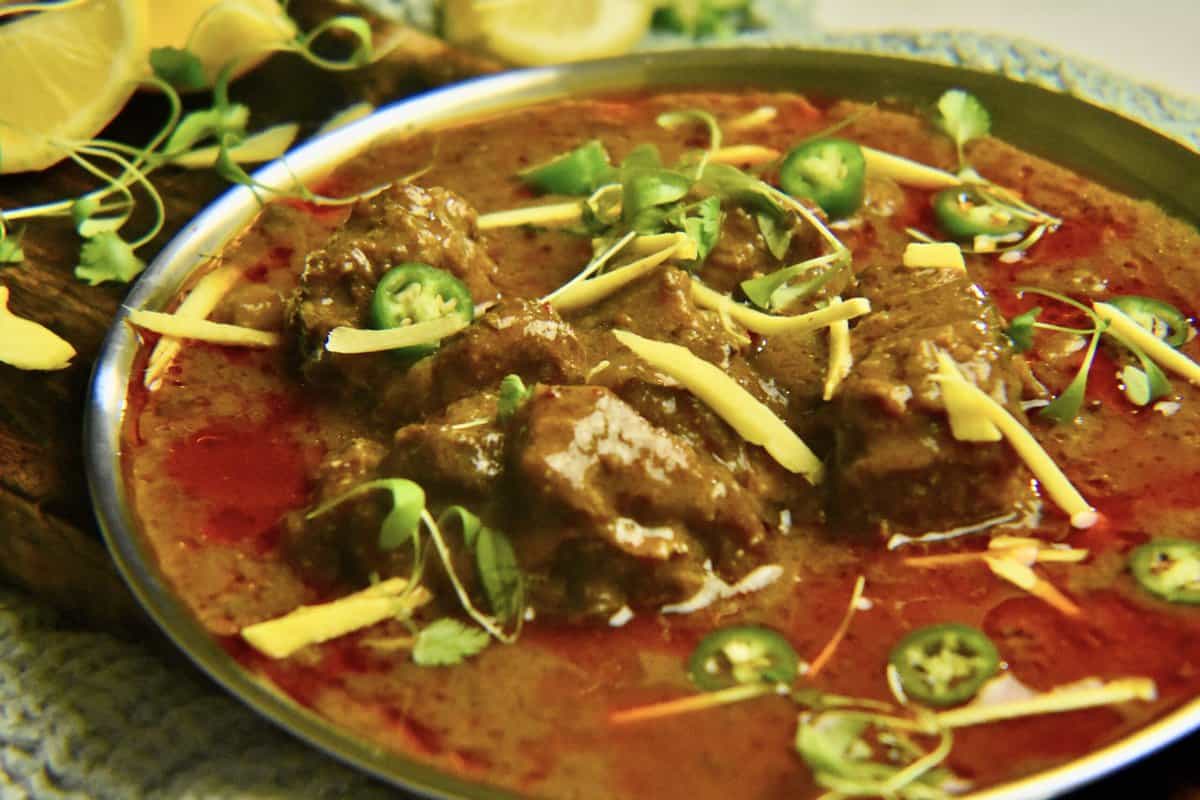
This slow-cooked Pakistani stew made with beef shank dates back to the late 17th or Early 18th Century. The word Nihari comes from the Arabic word Nihar which means morning. The name is apt as the shank stew was served to the Nawabs during the early morning prayer.
This Pakistani beef shank stew recipe continues to be a popular choice for breakfast and brunch today. A popular street food, Nihari is a special weekend breakfast treat like sooji halwa, aloo masala, and chana masala.
Jump to:
Why you'll love this recipe
- The perfect recipe to feed a crowd - This hearty Pakistani beef shank stew is a stand-alone recipe that's always a crowd-pleaser. No complicated menus to plan for your guests and no extra time to double or even triple this recipe.
- Delicious leftovers - Nihari freezes well and tastes better when reheated. Who doesn't like amazing leftovers?
- Authentic Street Food Taste - This recipe's homemade blend of spices delivers a Nihari just like the one you would enjoy on the streets of Karachi.
- No added preservatives - The Nihari will be completely organic since you'll be making your own spice blend from scratch.
The ingredients
The two things essential to an amazing pot of Nihari are the meat and the spice blend.
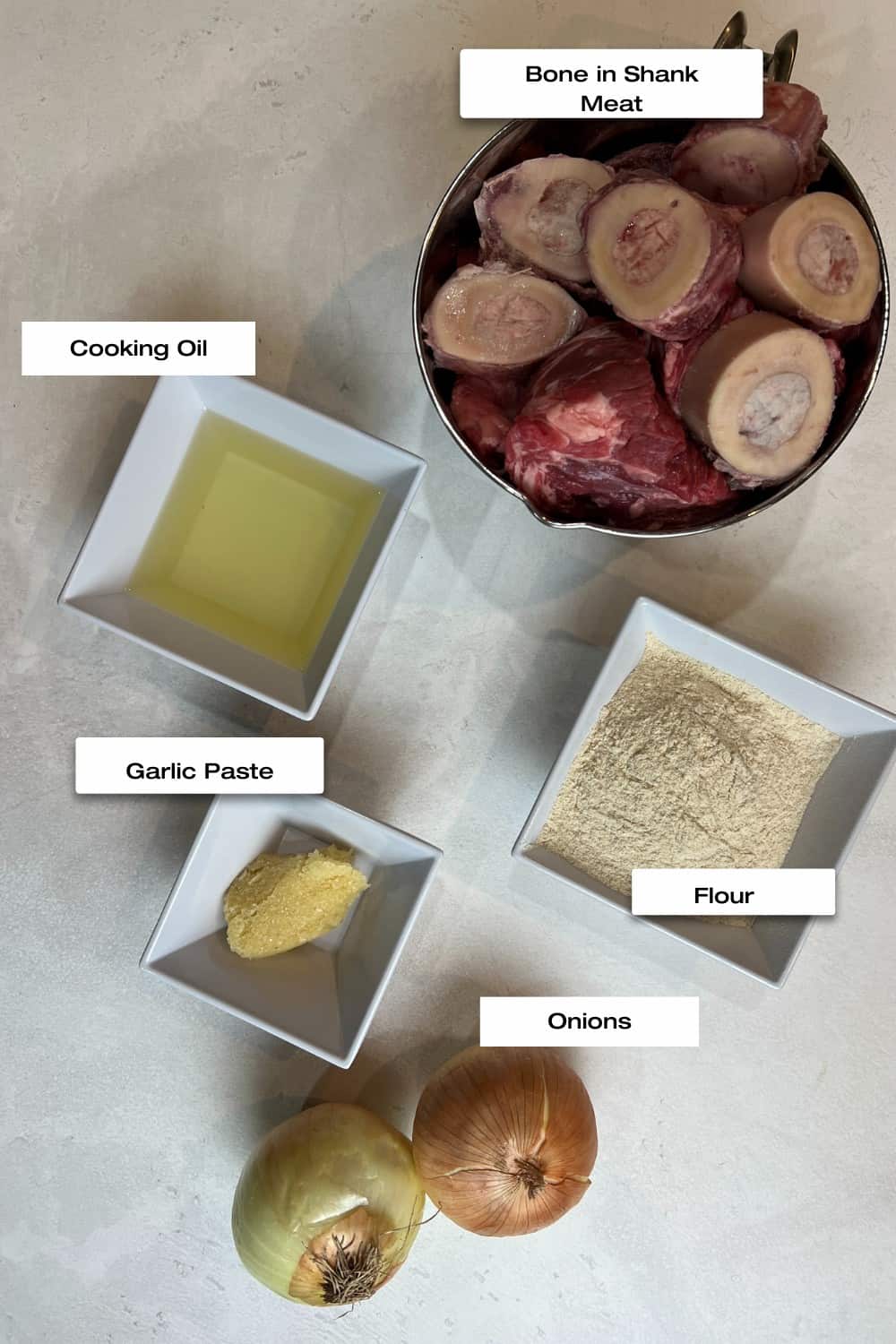
The meat
- The Meat - Bone in Shank Meat cut into big pieces is what is traditionally used in this recipe. The bones and marrow are essential to the stew.
- The Flour - A special wholemeal wheat flour known as Durum flour or Atta is used to thicken the Nihari. It is easily available on Amazon.
- The Onions - I always use yellow onions for their neutral taste. In this recipe, I fry them and add them to the Nihari as a tadka, or tempering, at the end.
The spice blend
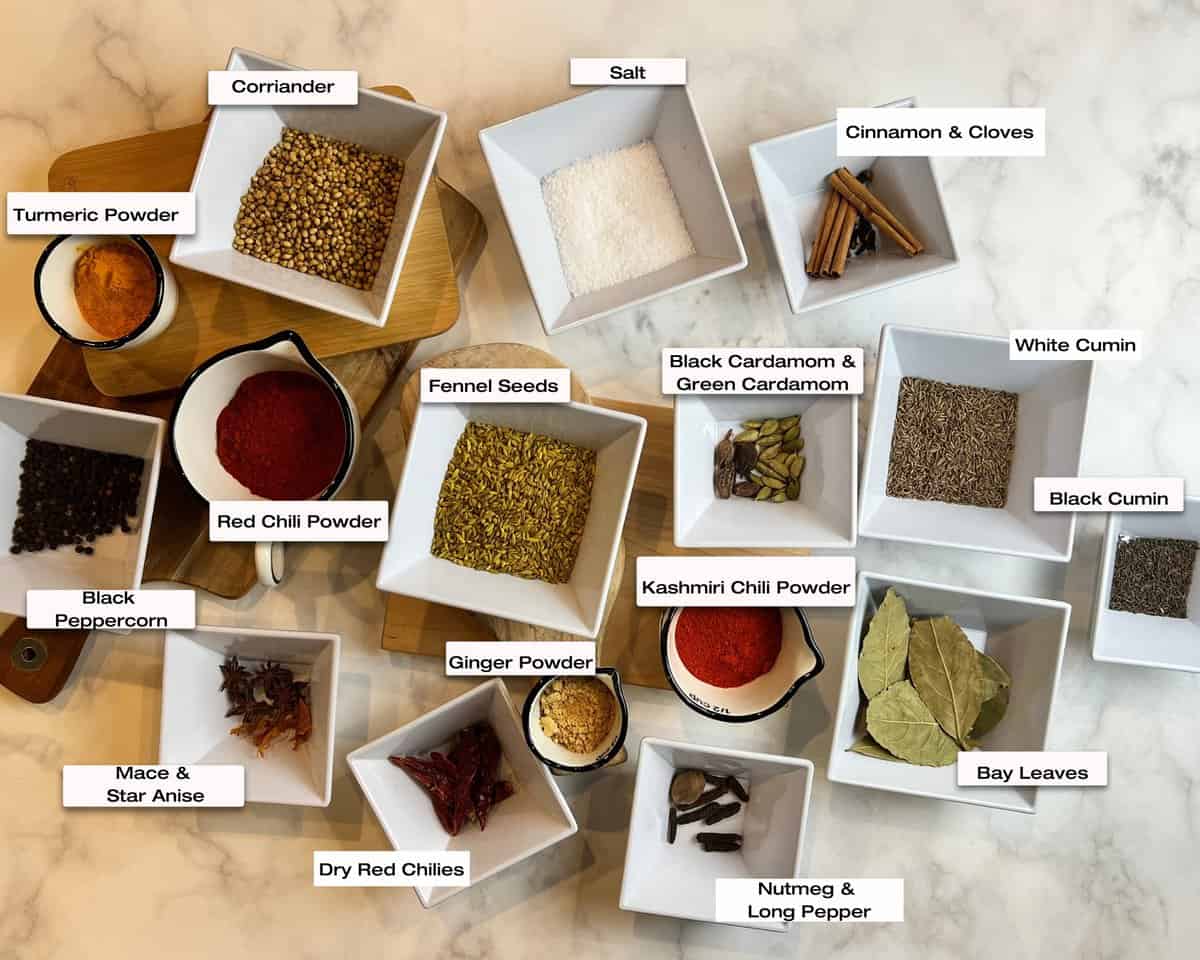
- Long Pepper - Long pepper, also known as Piper Longum and Pippali is a relative of black pepper. It has a more complex taste and is almost like an entire spice blend in one tiny little capsule. Earthy, smoky, and floral, Pippali is an essential ingredient in the Nihari spice blend. It is available in all South Asian stores, on Amazon, and at specialty spice stores such as The Spice House or Curio Spice Co.
- Black Cumin - Black cumin seeds are thinner and smaller than traditional brown cumin seeds and taste like caraway seeds. They are used in many savory Pakistan and Indian recipes, adding a delicious aroma to recipes like Chicken Pulao.
- Black Cardamom - Black cardamom has a warm smoky taste and aroma, quite unlike the floral notes in green cardamom. Very strong on its own when used to make spice blends, such as Chicken Korma or Mutton Biryani the result is perfect.
Grinding your own spices in small batches to make your own Homemade Nihari Masala by far leads to a more flavorful dish. A bold homemade spice blend is what gives this Pakistani beef shank stew an authentic Old Delhi taste.
Any leftover spices can be reused to make spice blends for other recipes, such as Beef Pasanday and Pakistani Beef Haleem Recipe.
The garnishes
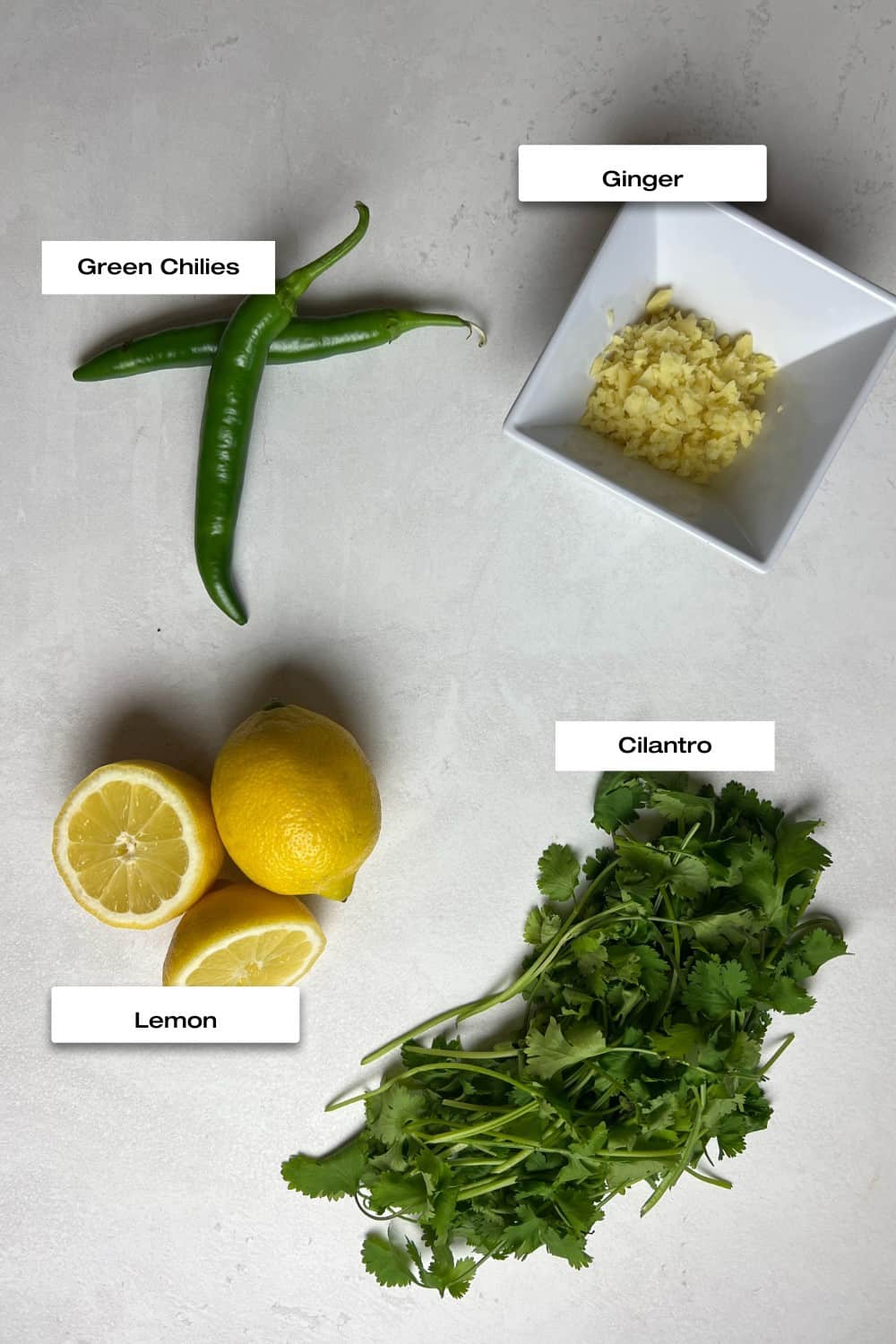
WANT TO SAVE THIS RECIPE?
- Green Chilies - I use serrano peppers since I like things spicy! If you want to tame things down, deseed the peppers.
- Ginger - I usually julienne the ginger, but if I'm serving a large crowd, I simply peel it and run it through my food processor.
For the complete list of ingredients with measurements plus recipe instructions, please see the recipe card at the bottom of this post.
Substitutions & variations
- Try different meat - If you have trouble sourcing bone-in beef shank, just use tender boneless beef such as chuck(front shoulder) or round(rear muscle) and buy some marrow bones separately to add to the shank stew.
- Use a store-bought spice blend - If you want to save some time then I recommend using Nihari Masala by shanfoods.com or nfoodstore.com for your Nihari.
- Make the stew gluten-free - To make the Nihari gluten-free, use brown rice flour instead of Atta (Durum whole wheat flour).
- Pair the stew with crusty warm French bread - Switch things up and try some warm crusty French bread with your Pakistani beef shank stew instead of Naan.
- Make delicious sandwiches with leftover meat - The leftover melt-in-your-mouth Nihari meat tastes amazing in sandwiches.
Step-by-step instructions
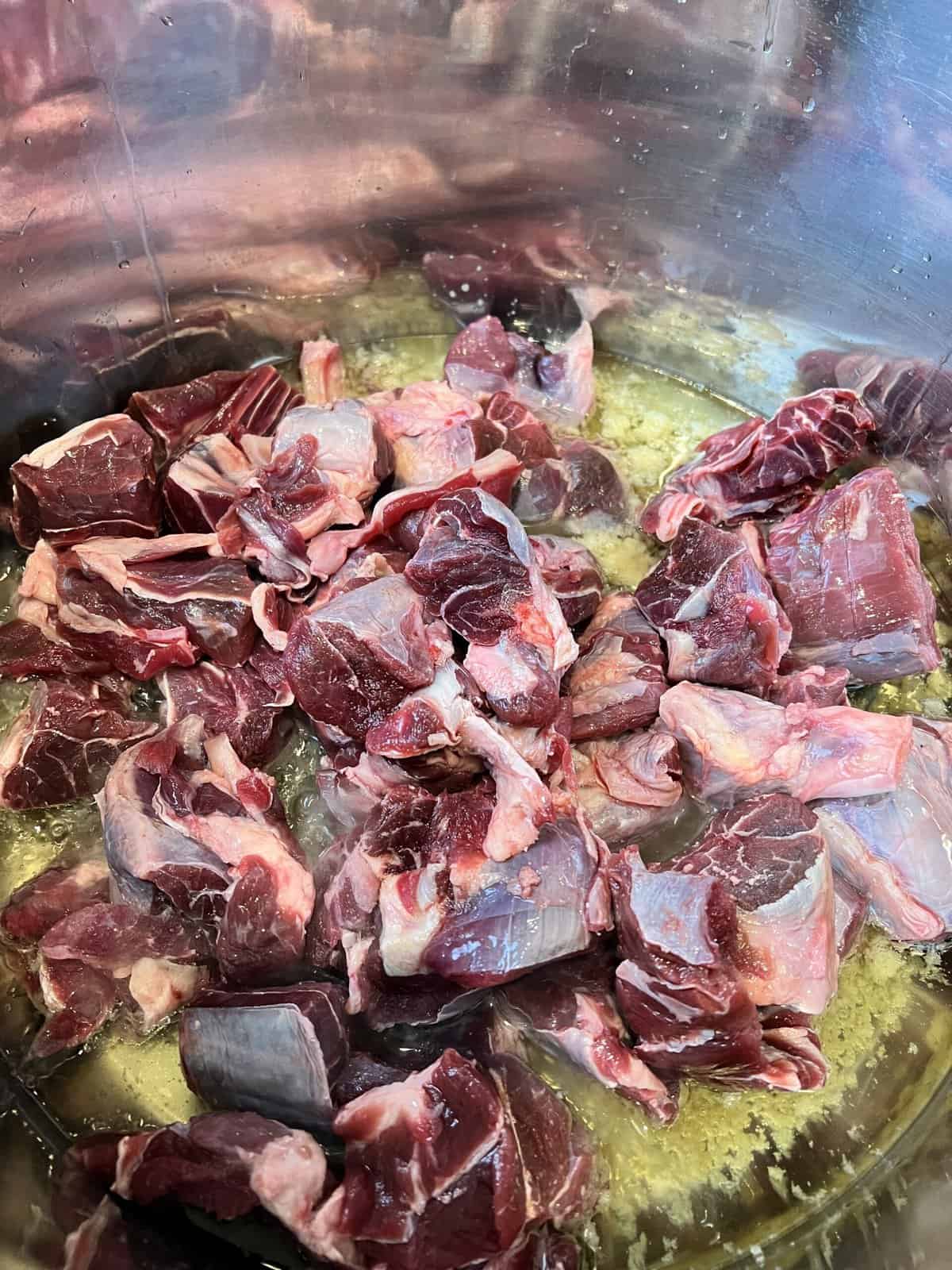
Step 1 - Heat the cooking oil, sauté the garlic paste for about 30 seconds, and then add the meat to it.
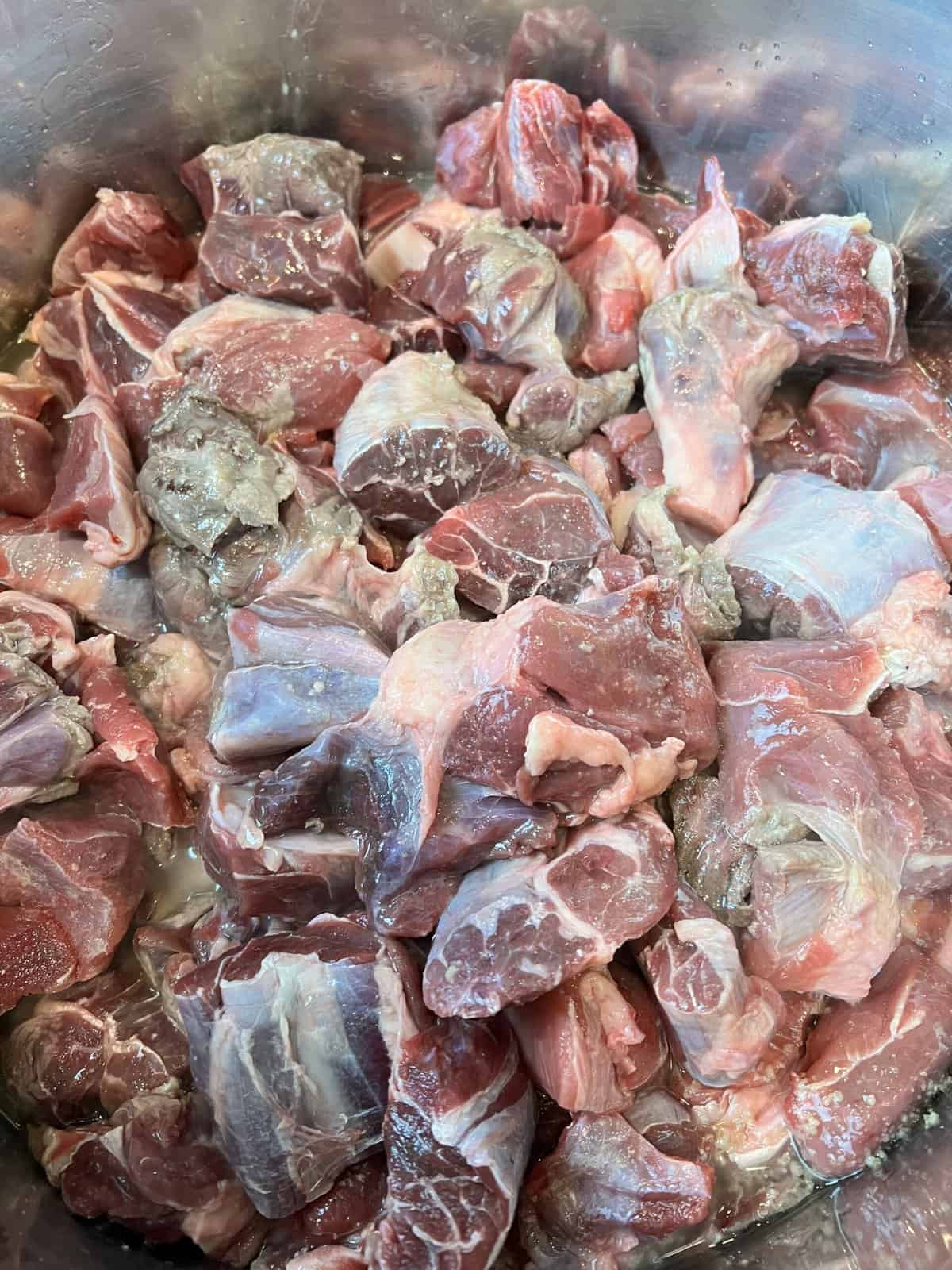
Step 2 - Cook the meat and sauté it till it just changes color and is no longer pink.
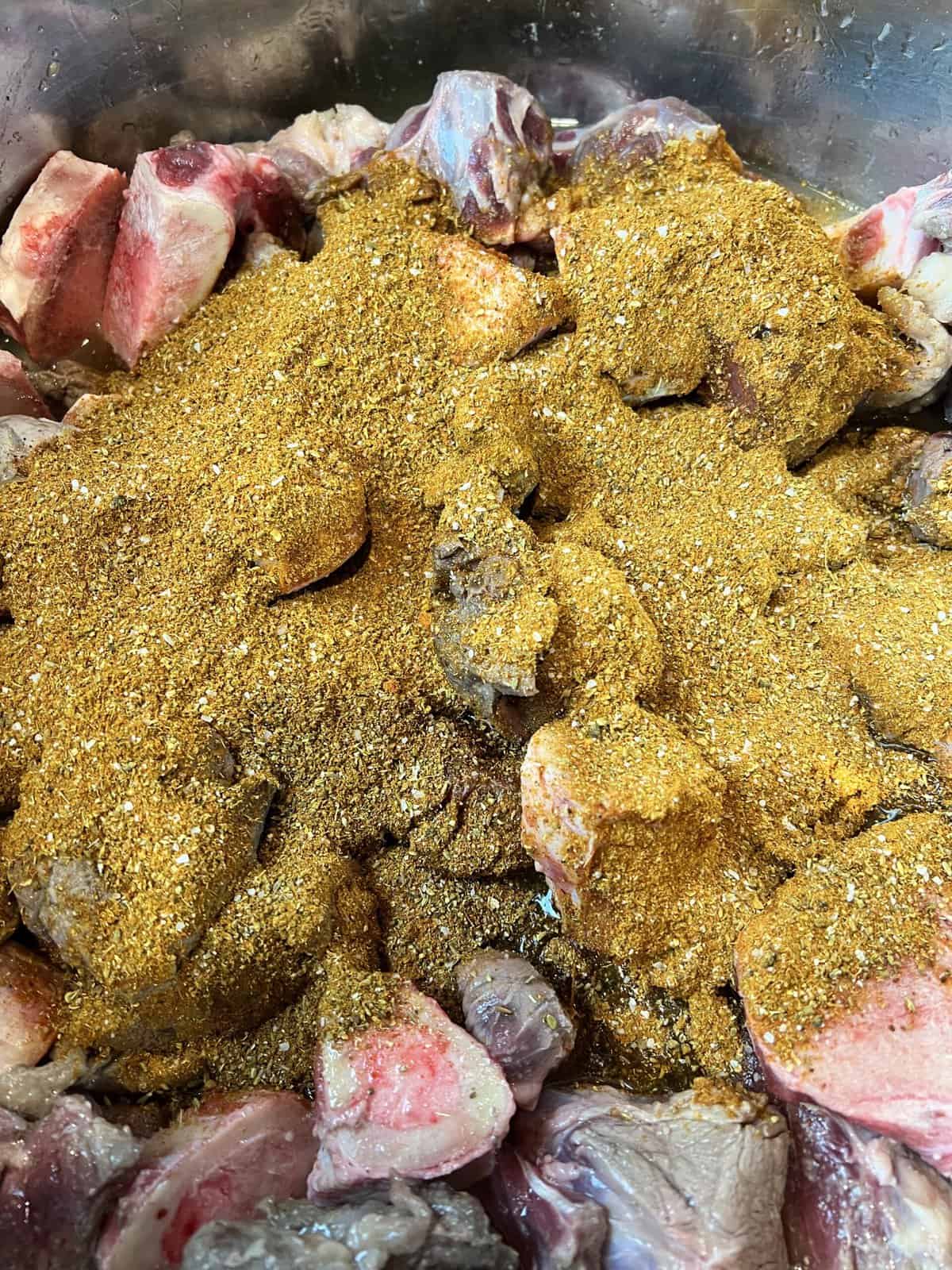
Step 3 - add in the prepared spice blend and stir fry for a few minutes to allow the spices to bloom or temper.
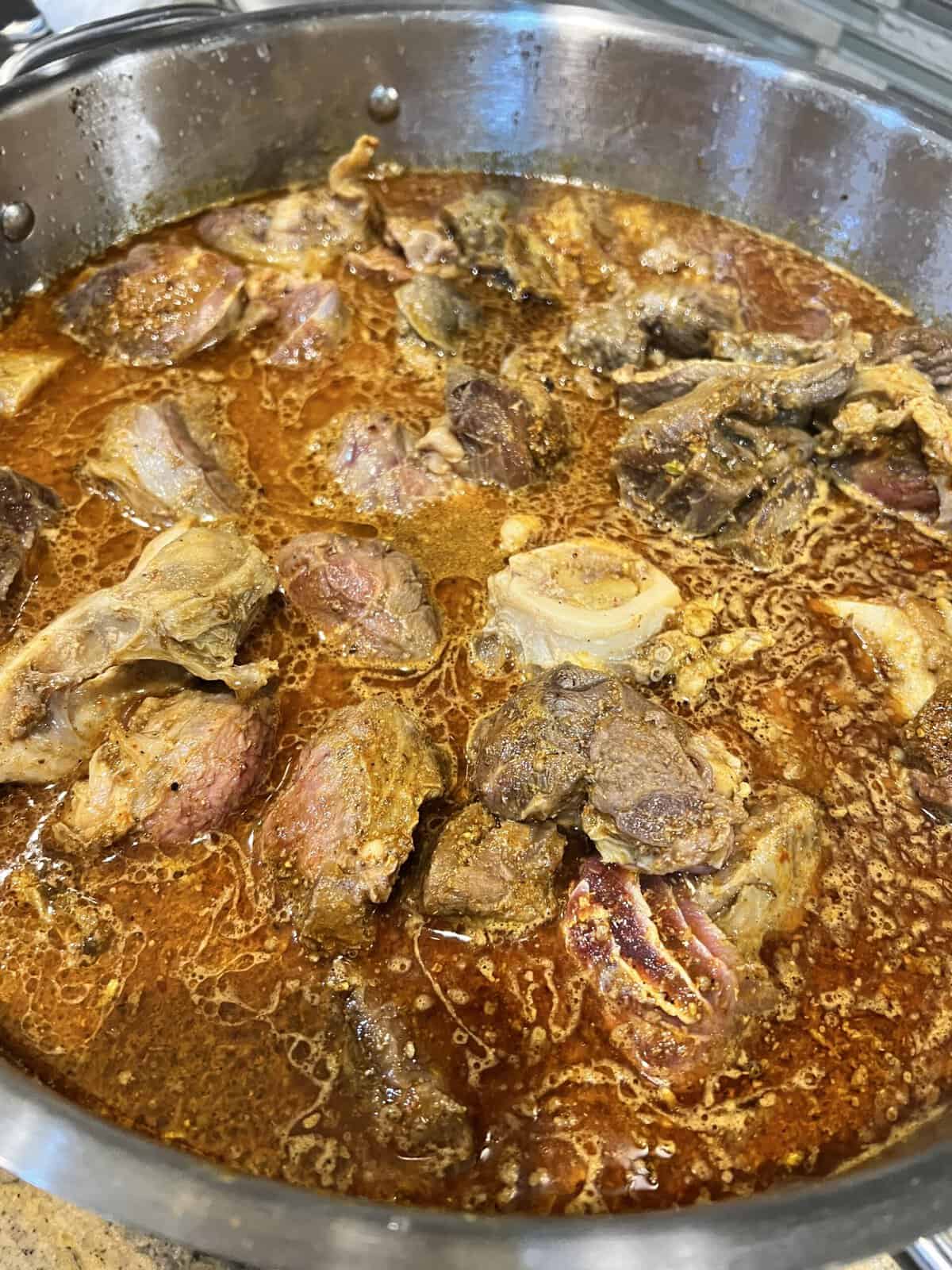
Step 4 - Add in enough water to just cover the meat and bones, and bring the mixture to a boil.
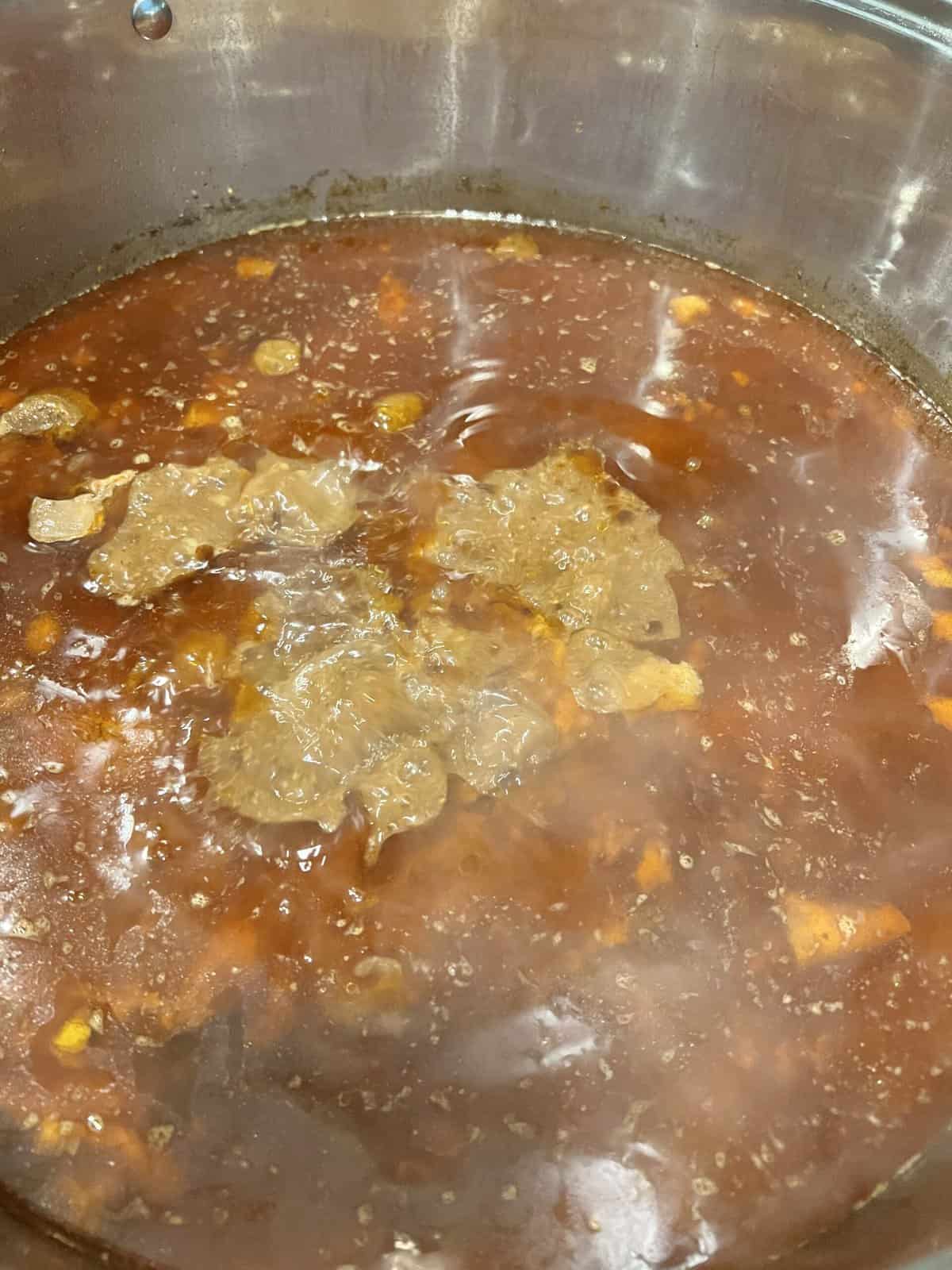
Step 5 - Then reduce the flame to low medium heat and cook the Nihari for around 3-4 hours.
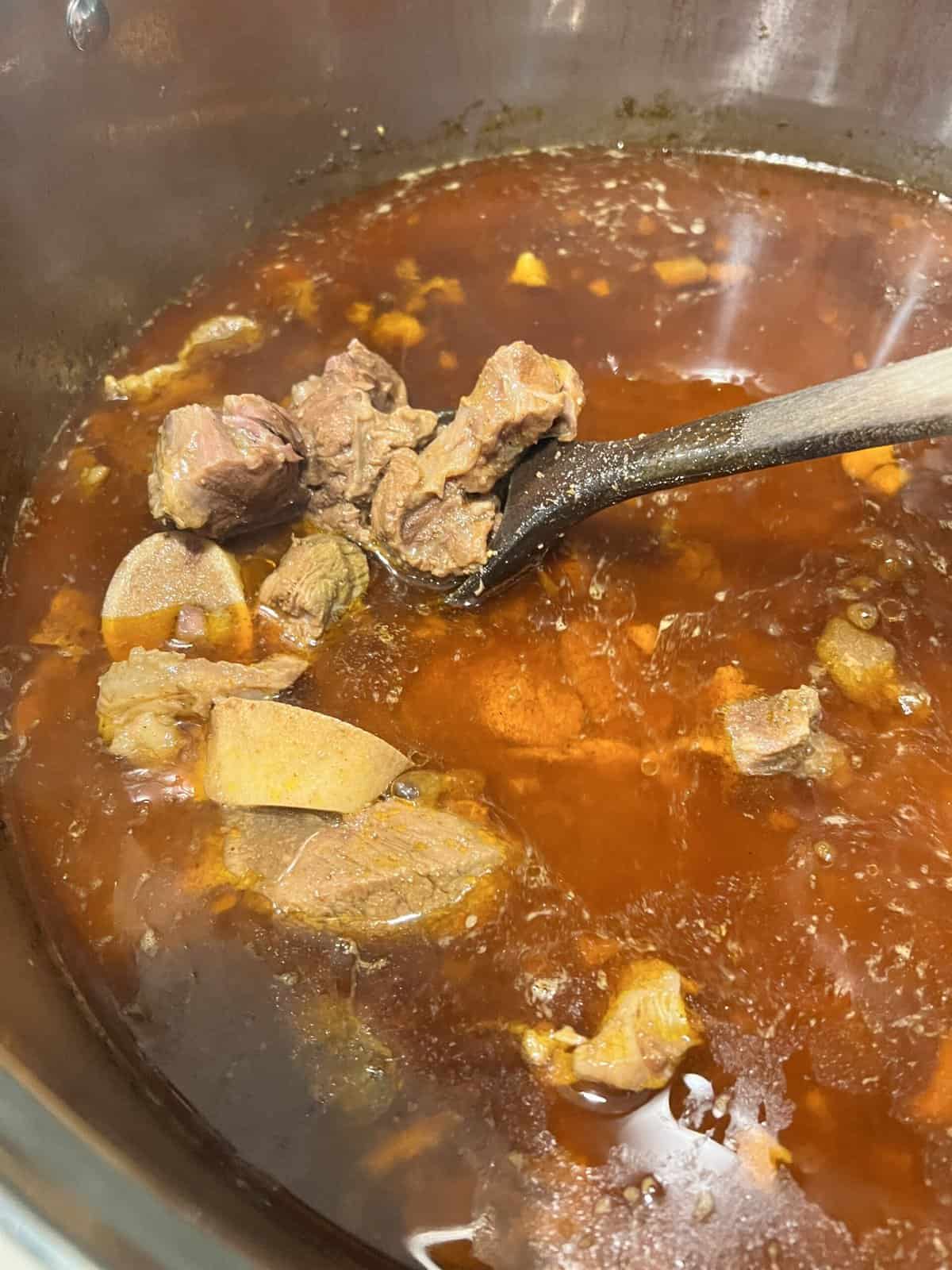
Step 6 - Once the meat is tender, I remove it using a slotted spoon. I wait for it to cool a little bit and then remove any excess fat and discard it along with the bones, adding the marrow back to my curry.
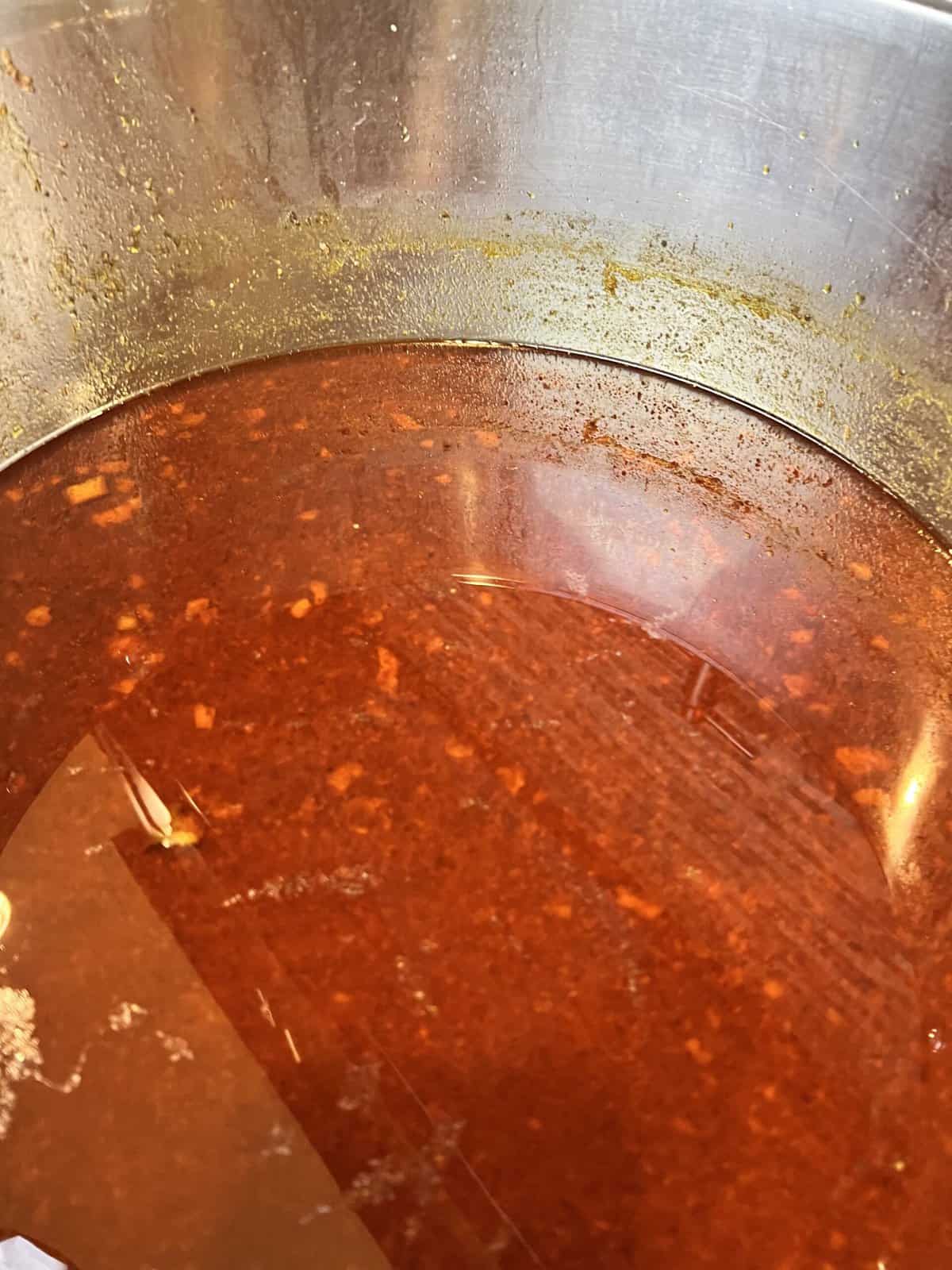
Step 7 - Make a smooth flour paste using 1 cup of atta and 2 cups of hot water. Add this slurry in slowly and stir constantly till the Nihari thickens. This will prevent lumps from forming.
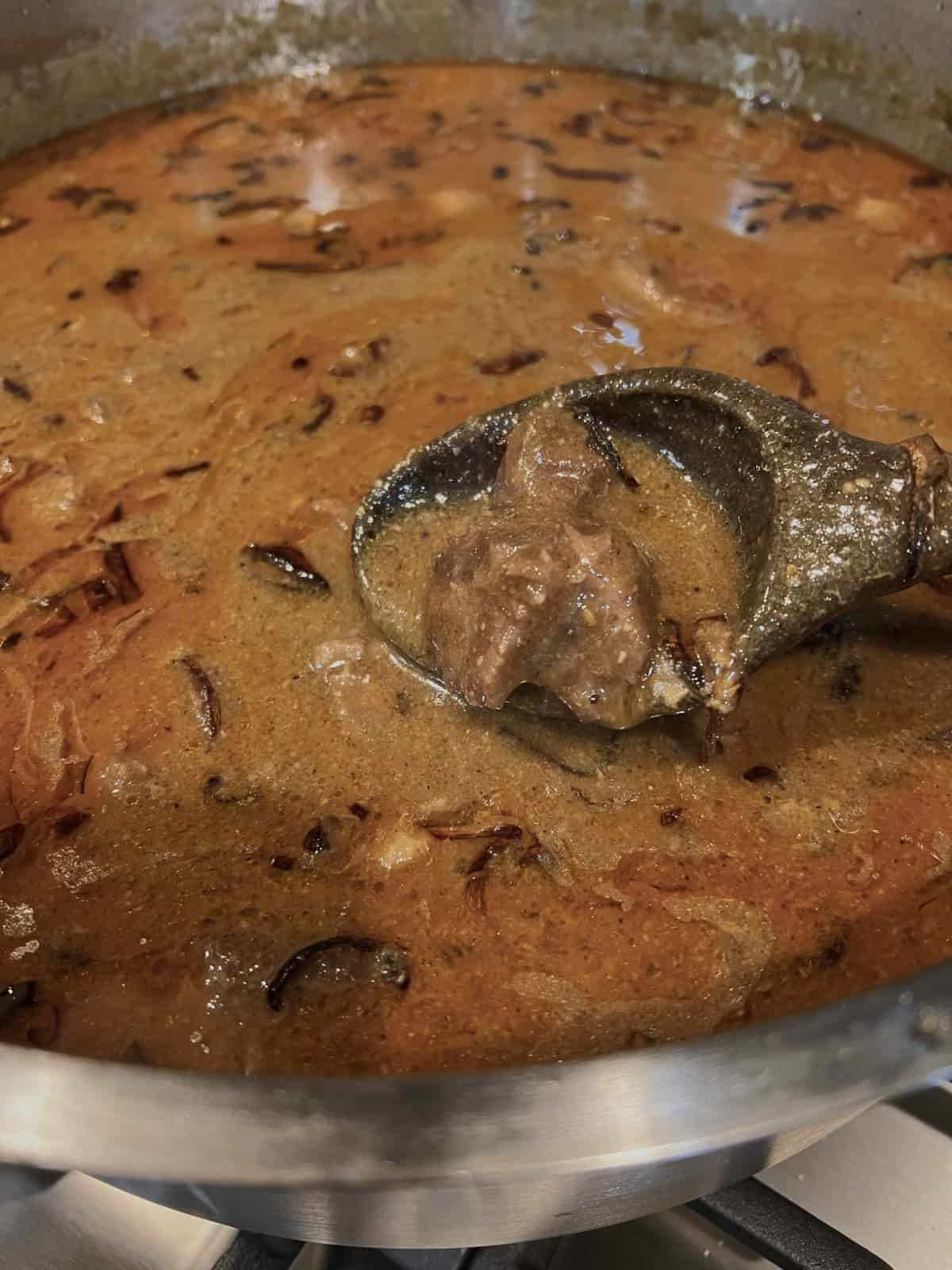
Step 8 - Thinly slice a medium onion and fry it in some oil till it's crispy and dark brown. Then pour the fried onions along with the oil over your Nihari.
Expert tips
- Remove the fat on the meat after it's cooked - I find that leaving the fat on the meat adds a lot of flavor to the shank stew. Plus, after 4 hours of cooking, it peels right off, making the whole process more efficient.
- Make sure to add the marrow - Remove the bones from the mixture and discard them, but do add the marrow back to the stew as it really adds loads of flavor.
- Always use hot water to make the slurry - This way there is no rapid change in temperature as you add the slurry, resulting in a smooth mixture without any clumps.
- Keep some hot boiled water on hand - If the Nihari seems to be getting too thick too fast, add a cup of hot water to help thin it out.
- Add some tempered Kashmiri chilies to your stew - As you fry the onions, add just 1 tablespoon of Kashmiri red chili powder to the oil at the end. This will give your Pakistani beef shank stew a restaurant finish.
Recipe FAQS
Nihari is the perfect food to prepare in bulk and store as it always tastes better when reheated! In the fridge, it will stay okay in an airtight container for up to 3-5 days. In the freezer, it will last for up to 3 months!
prepare a flour slurry using Atta, whole wheat flour made of Durum Wheat. You can substitute with Whole wheat flour if you don't have Atta. But this will alter the taste and texture of the Nihari.
The caramelized onions added at the end retain their full flavor, aroma, and color and the result is a richer stew.
Nalli refers to the bones that contain the marrow and gives the meat stew its amazing flavor. Nalli Nihari usually indicates that the Nihari was cooked with bone in shanks and that the stew contains marrow.

Other recipes you may like
For more Pakistani recipes like this, check out 20 popular Pakistani recipes. If you decide to try this recipe, Please don't forget to leave a rating and comment below! If you take a picture then tag me on Instagram! Thank You!
Nihari Recipe (Pakistani Beef Shank Stew)
Ingredients
Nihari Masala Mix (For 5 pounds of meat)
- 10 whole green cardamom
- 2 whole black cardamom
- 3 whole cinnamon sticks
- 2 whole star anise
- 10 whole cloves
- 3 tbsp coriander seeds
- 1 tbsp cumin seeds
- 3 tbsp fennel seeds
- 1 tsp black peppercorns
- ½ piece nutmeg
- 1 piece mace
- 4 whole long black pepper (Piper Longum) (see notes)
- ½ tsp black cumin seeds
- 6 whole bay leaves
- 4 whole red dried chilies
- 1 tsp ginger powder
- 3 tsp salt
- 4 tsp red chili powder
- 2 tsp turmeric powder
- 2 tsp kashmiri chili powder
The Ingredients
- 5 lb beef shank (see notes)
- 1 cup cooking oil
- 5 tbsp garlic paste
- 12 cups water
- 1 cup whole wheat flour (see notes)
- 2 whole onions
The Garnish
- 2 whole lemons
- ½ cup cilantro
- 2 whole green chillies (see notes)
- 2 inch ginger piece
Instructions
Nihari Masala Mix (For 5 pounds of meat)
- Dry roast all of the whole spices in a nonstick frying pan for 2-5 minutes. Constantly stir to prevent burning and remove them from the pan as soon as they release their aroma.
- Grind all of these spices to a fine powder and then mix them with the powder spices (see notes).
Nihari
- Heat ½ cup cooking oil in your pot.
- Add and saute the garlic for 2-3 minutes.
- Add the meat and the nalli (marrow bones) and roast till they are no longer red.
- Add the ground spices and 10 cups of water and bring the mixture to a boil
- Lower heat to medium and simmer for 4 hours.
- Prepare a slurry with the remaining 2 cups of water and durum flour and add to the Nihari, constantly stirring to prevent any clumps forming. Cover and simmer for another 15 minutes (see notes)
- Thinly slice and fry the onions in a ¼ cup of oil to a dark brown. Pour the onions and oil on the Nihari and simmer for another 15 minutes.
Garnish
- Quarter the lemons.
- Finely chop the cilantro.
- Thinly slice the ginger.
- Finely chop the green chilies.
Notes
- Long Pepper - Also known as Piper Longum and Pippali, is an Indian Long Pepper that is the primary ingredient in Nihari. You just won't get that authentic taste without it in the mix so I highly recommend sourcing it from Amazon and using it.
- Beef Shank - The best meat to use for the Nihari is bone-in Beef Shank. Make sure to buy and use marrow bones as well. This is what really gives the stew its rich flavor and a special trip to the butcher will be well worth your effort.
- The flour - Use Durum wheat flour, known as "Atta" for this recipe. This is wholemeal wheat flour and has a distinctly nutty taste. The recipe will be better with this, but if you can't source it then use regular wheat flour.
- Serrano Chilies - The closest to the Pakistani chilies I grew up eating, these are my go-to when cooking all of my curries. I find that other chili varieties just don't give that authenticity of flavor to my food. If you find them too spicy, you can deseed them.
- Spice grinder - I use a coffee grinder as my spice grinder and find that it grinds all my spices quickly and efficiently.
- Preparing the slurry - Make sure to prepare the flour slurry with hot water to prevent the flour from clumping.


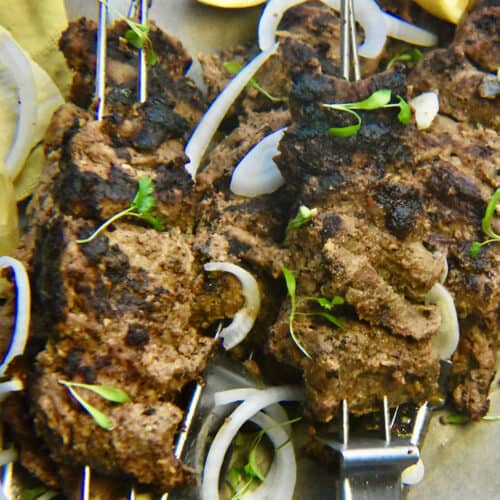
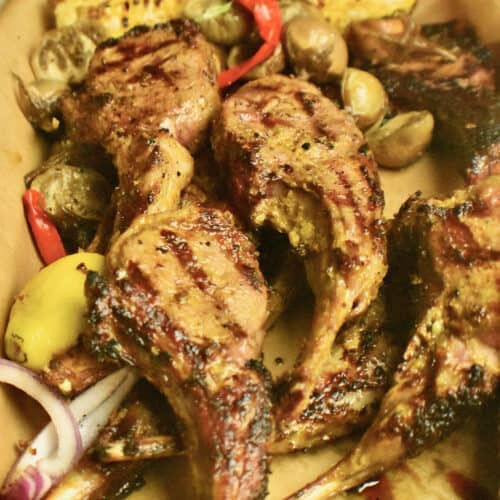
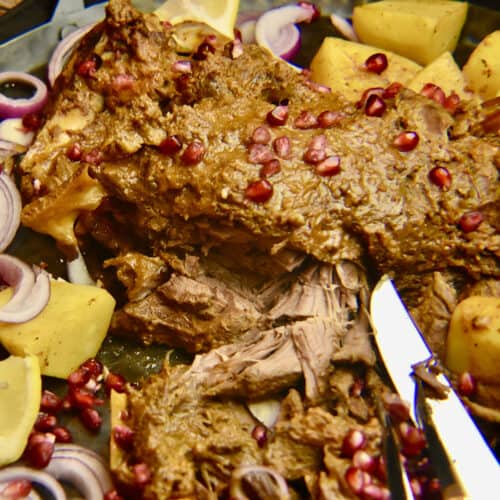
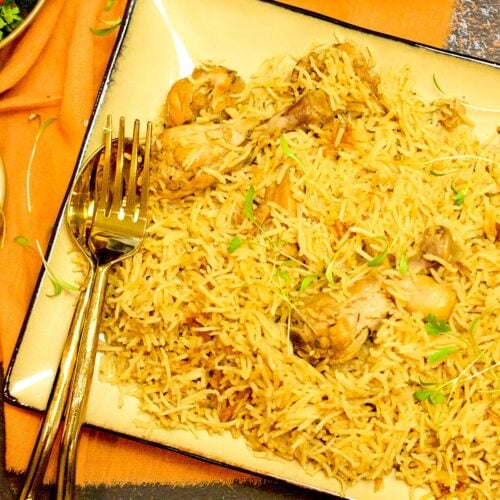
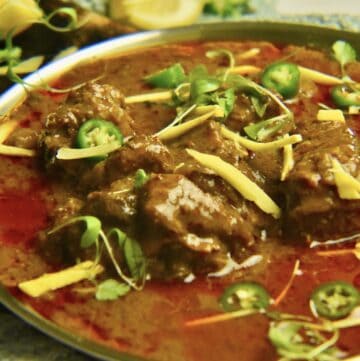


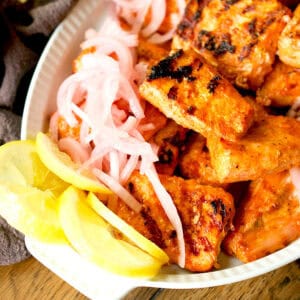
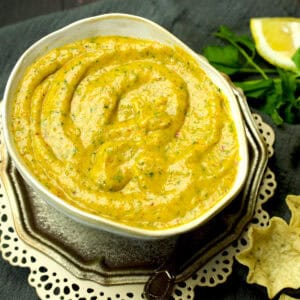
Misha
Hi Nosheen, I hope you are well. I am looking to make this recipe for Eid on sunday and wanted to confirm the size of the cinnamon sticks you are using. thank you
Nosheen Babar
Hi Misha,
So glad you’re trying this recipe. Use 1 inch cinnamon sticks.
Misha
Thank you very much! Will let you know how it goes!
Nosheen Babar
Can't wait for a review.
Misha
It turned out amazing! Thank you for the recipe, the proportions used were perfect ?
Nosheen Babar
Hi Misha. Thank you for trying the recipe and sharing your feedback.
Behnam
I would like to put a comment on the word Nihar. Concidering my travels and living in Oman and Iran, I think the word Nihar means day time and was used for Lunch. In Persian "Nahar" is still used for "Lunch".
But anyhow your recipes make my family mad 🙂
Thank you
Nosheen Babar
Thank You for the clarification. I will recheck the meaning per my sources.I’m glad you’re enjoying the recipes -:)
Behnam
Hi and thank you so much for all the resipe info besides the way to cook.
I am not Pakistani but have lived in North Pakistan at the time it used to be NWFP. I have seen some of your dishes and they are amazing and further more than it used to be when I was there.
Your resipes bring me back memories.
Nosheen Babar
Thank You Behnam,
I’m glad you’re enjoying the recipes-:)
Saima
This recipe is AMAZING! I didn’t have piper longum, but it turned out delicious! Will definitely be making this again ?
Nosheen Babar
So glad you tried it and liked it Saima. Do try and add the piper longum next time.It makes a lot of difference to the taste!
Ofri
Great recipe everyone enjoyed it
Nosheen Babar
Thank You so much!
n/a
I am not Pakistani but my fiance is. I decided to make this dish because I myself grew up eating it at friends' homes and wanted to do something special for him. I followed the recipe and was only missing 2-3 spices in the list. Nonetheless the Nihari turned out so good and delicious. Hopefully next time I will have the piper longum and star anise in my pantry 🙂 Thank you for your recipes <3
untoldrecipesbynosheen
Thank You for trying the recipe! I’m so glad it turned out well and that you plan to make it again!Appreciate your feedback!
Sanjay
Hi there! This is an excellent recipe! One quick question, I assume the 5lbs of meat includes the bones - right?
Cheers!
untoldrecipesbynosheen
Thank You and yes it does include the bones! Hope you like the final product! Please do rate the recipe once you make it!
Sajid
Hi
I made this yesterday and followed your recipe to a T...except for the piper longum. I know, I know! Honestly, I looked all over for some, including Patel Brothers who are the mother of ALL Indian grocers and even they didn't have any. I google researched it and added extra pepper, nutmeg and ginger. It wasn't as spicy as I remember, and maybe that's why. But I thoroughly enjoyed it!
untoldrecipesbynosheen
Hi Sajid,
So glad you tried the recipe. I guess I should have mentioned in the post that I got the piper longum from Amazon. It does make a huge difference to the taste of the Nihari. Maybe next time you can order it. As far as the spices are concerned, I usually keep the spice and salt levels at a medium in the recipe to suit the needs of a larger audience and you can perhaps add a bit more red chilli powder to the recipe or top your bowl with chopped thai chilies which are really hot and will spice it up nicely. As always I really value your honest feedback and appreciate you trying my recipes.